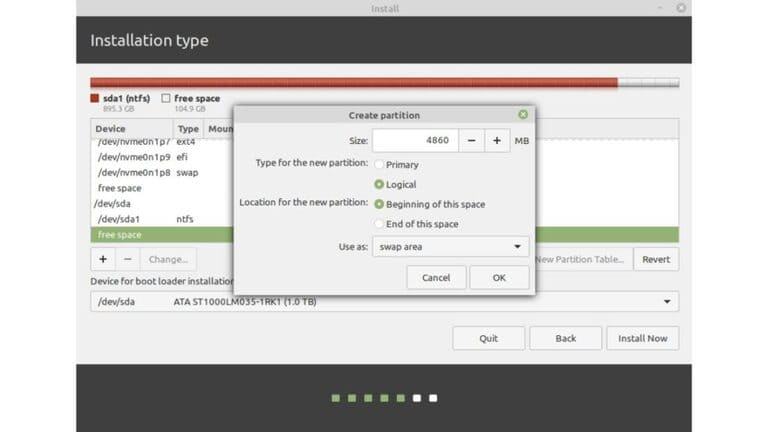In this article, we will find out Swap partition What is in Linux after all?
| Join the channel Telegram of the AnonyViet 👉 Link 👈 |

What is Swap Partition in Linux?
Swap is similar to the memory expansion feature on smartphones offered by some manufacturers recently. In short, it uses the phone’s internal storage like RAM if the RAM runs out of space. Similarly, on Linux, the Swap partition keeps your computer from crashing by storing volatile data on the internal memory (HDD/SSD) if your physical RAM is full.
Creating a Swap partition is not necessary to install Linux, but if your computer has less RAM and more storage space, then you can take advantage of the hard drive to create a Swap partition as it can be useful in some cases.
How much space is needed for the Swap partition?
If your computer has the characteristics we mentioned above, then you should create a Swap partition, but the question is how much space should you create?
There’s certainly no limit to the size of the Swap partition you can create, but the general view is “Swap partition size is half of your RAM.” However, only create a Swap partition if you are sure that you will run memory-intensive programs and perform a lot of tasks, otherwise you will essentially waste storage space that you could use to store other things.
How to Create Swap Partition in Linux
After creating the / and /home partitions, the next step will be to create the Swap partition. All you need to do is create an empty partition whose size depends on how much RAM you have (Minimum 2GB to 4GB Swap partition space if you have 8GB RAM). In the options select “use it as swap” or any word related to Swap and click create. You can then continue with the installation.

Alternatively, you can also install Ubuntu side-by-side with the latest Windows 10 here.











